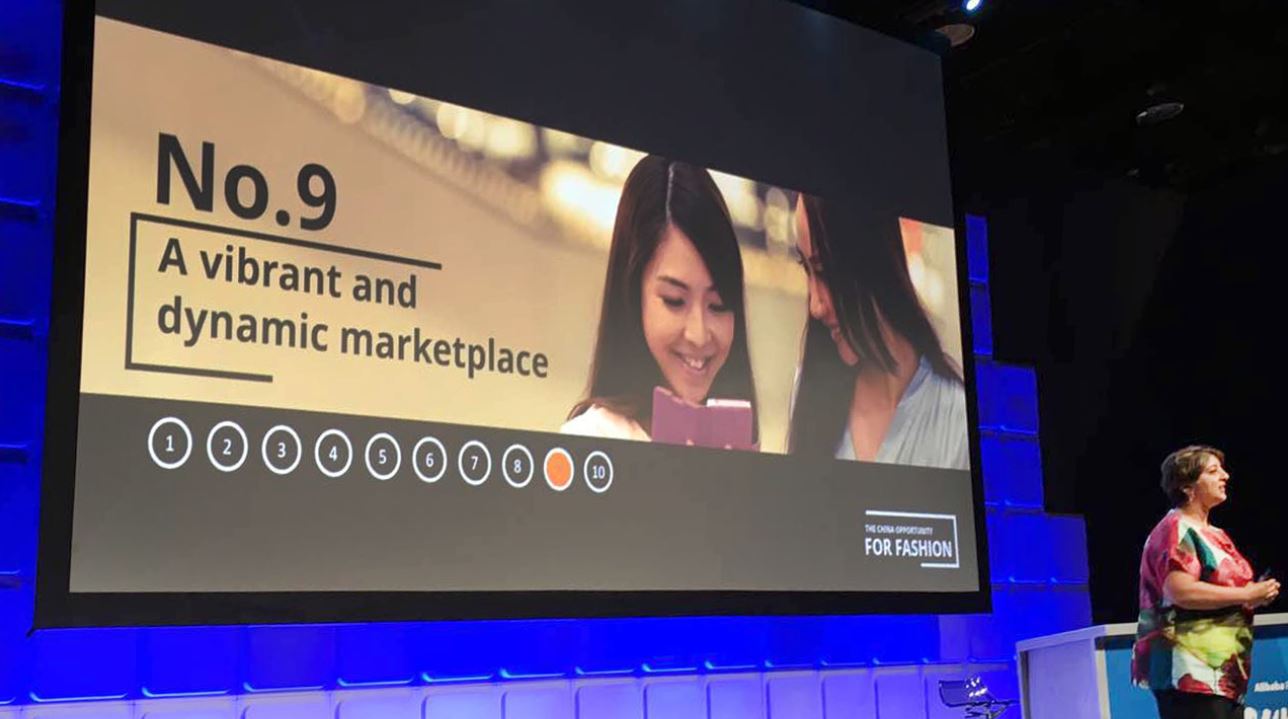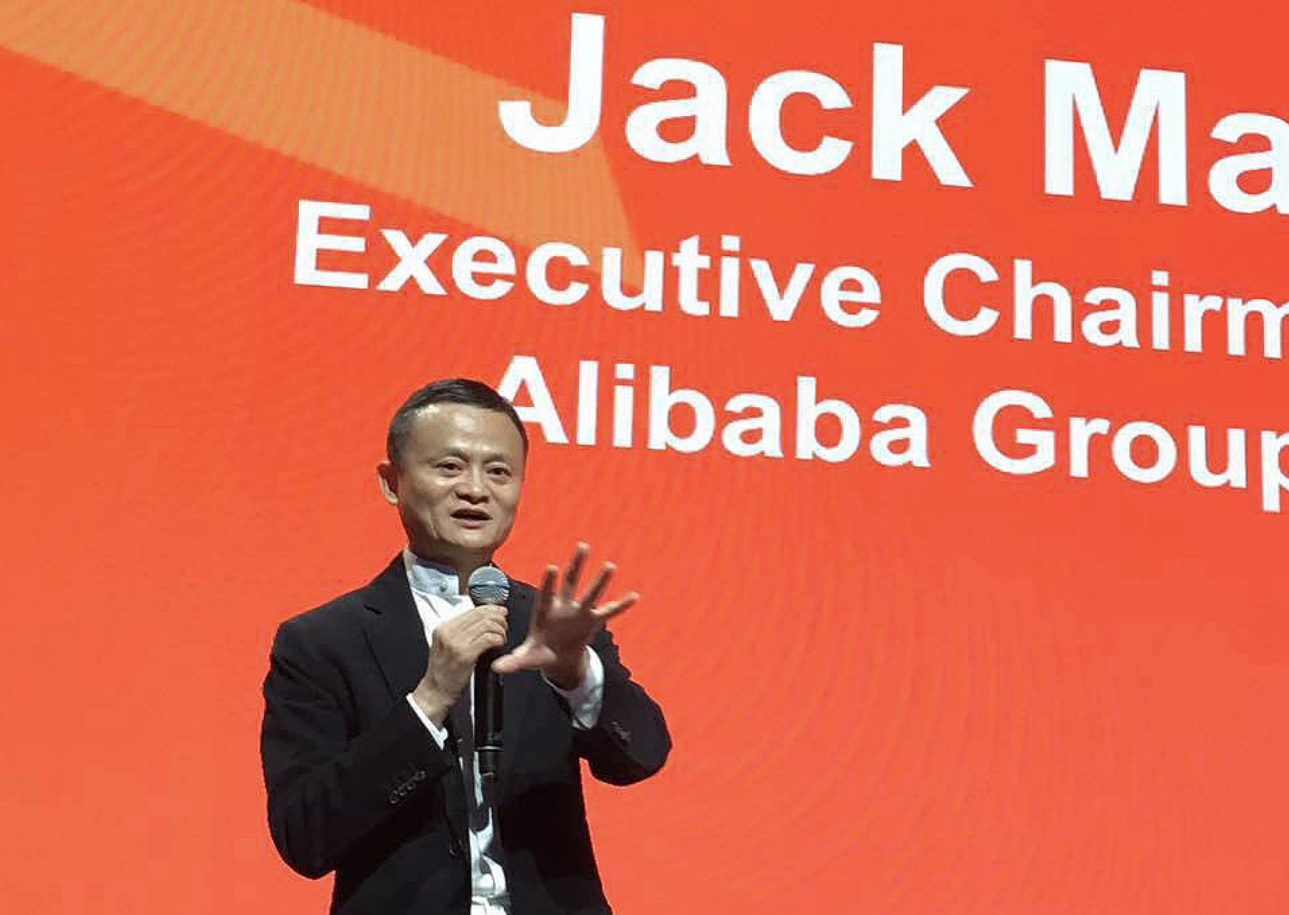The Fung Global Retail & Technology team attended Alibaba’s Gateway ’17 event in Detroit, Michigan, this week. This inaugural conference, which attracted more than 3,000 attendees, is the largest event Alibaba has ever hosted outside China. The summit was designed to help small and medium-sized businesses in the US better understand the China opportunity and enable them to sell into China via Alibaba’s various platforms.
Below are the key takeaways and themes from the two-day event:
1) Livestreaming Is an Effective Tool for Engaging with Chinese Consumers
Livestreaming is a source of inspiration and entertainment for Chinese consumers, especially for those who live in lower-tier cities that have limited other sources of entertainment. In a shopping context, a number of fashion “cewebrities” (people who gained their fame online) are popular in China. Many host livestreaming sessions in which they recommend different products and answer live questions from the audience. Top cewebrities have millions of followers on social media and tens of thousands of viewers for their livestream sessions.
At Gateway ’17, Fung Global Retail & Technology livestreamed an interaction between Managing Director Deborah Weinswig and Alibaba’s robot on the expo floor. The video attracted more than 24,000 views on Weibo (the Chinese version of Twitter) within 24 hours. American actor and TV host Jeff Locker also hosted a livestreamed session on the expo floor. The session focused on American agricultural products and offered coupons to hundreds of thousands of Chinese viewers.
Liyia Wu, the founder and CEO of ShopShops—a cross-border e-commerce platform targeted toward Chinese shoppers—shared her experience of selling 60 pairs of shoes from one indie designer during a livestreamed session that was broadcast from a fashion store in New York City’s SoHo neighborhood. Wu said that the session also prompted hundreds of follow-up orders after it was over.
2) Selling a Lifestyle Rather than a Product Can Help Build Strong Customer Relationships
American lifestyle expert Martha Stewart shared her views on how to build a strong relationship with customers. Stewart started a curated meal subscription service called Martha and Marley Spoon in 2016 that is set to compete with regular grocery shopping. She said curated meal subscriptions fit into the lifestyle of a busy mom who prefers to enjoy spending more time with her family rather than designing recipes for them. Stewart recently added wine pairings with the meals in order to elevate the experience. She noted that ingredients in the meal kits are perfectly portioned for each meal, reducing food waste in the long run, which appeals to consumers who are environmentally conscious.
 Source: Fung Global Retail & Technology
Source: Fung Global Retail & Technology
Other speakers at the event talked about the opportunity presented by creating lifestyle inspiration for Chinese consumers. Many in the rising middle class in China aspire to experience the American lifestyle by purchasing American goods, particularly in categories such as fresh produce and outdoor apparel. Outdoor category sales in China are growing because an increasing number of Chinese consumers are interested in exploring outdoor activities as part of their lifestyle. American outdoor brands have the opportunity to introduce the outdoor lifestyle to millions more curious Chinese consumers.
3) American Boutiques and Emerging Brands Have Significant Opportunity in China
Chinese consumers are becoming increasingly sophisticated. Their motivation for buying foreign brands is transitioning: many no longer seek to represent their socioeconomic status through such goods, but to express their individuality. As a result, they are increasingly interested in niche brands and retailers that offer unique products.
ShopShops, the cross-border e-commerce platform, connects Chinese consumers to fashion boutiques in New York, San Francisco and Los Angeles. The startup brings local designers’ goods from the US to affluent Chinese shoppers. With an average price point of $200, ShopShops targets affluent Chinese millennials who aspire to express themselves through fashion.
Stadium Goods is a New York–based premium sneaker and streetwear store that offers hard-to-find collectible items. The company launched its Chinese e-commerce flagship store on Alibaba’s branded site, Tmall Global, in 2016. Its online store in China now generates more business than its US operation does, and sales on Tmall Global are growing exponentially, according to CEO and Cofounder John McPheters. He said he discovered that there is huge demand for collectible sneakers in China through his frequent visits to the country and after seeing Chinese tourists make big purchases at the company’s US store.
4) Third-Party Trade Partners Enable American Companies to Operate Their Chinese E-Commerce Businesses on Alibaba’s Platforms
Alibaba has built a network of trade partners in wholesale and retail to help US businesses that have little experience with the Chinese market simplify their in-country operations. In terms of wholesale, US brands supply to Chinese wholesalers that distribute their products on Alibaba’s C2C e-commerce stores on Taobao.com. The wholesale partners take care of logistics and payments on behalf of the US companies. In terms of retail, brands and retailers hire third-party companies to provide in-country operations, marketing and logistics services. The retail partners usually specialize in a particular vertical, such as fashion, beauty or baby goods. Baozun is a Tmall retail partner that has worked with 133 brands—including Microsoft, Starbucks, Nike and GNC—in eight different categories to help them operate their Chinese e-commerce businesses.
 Source: Fung Global Retail & Technology
Source: Fung Global Retail & Technology
5) Small and Medium-Sized Brands and Retailers Should Enter China via E-Commerce
Alibaba Founder and Executive Chairman Jack Ma encouraged small and medium-sized US businesses to embrace the huge potential that Chinese e-commerce presents. Ma calls China “a country on mobile devices,” as compared with the US, which is more of a country on wheels. By 2020, 60 cents of every dollar spent online globally will come from China, according to eMarketer, and cross-border e-commerce in China will grow sixfold from 2015 through 2020, to $245 billion, according to AliResearch and Accenture.
 Source: Fung Global Retail & Technology
Source: Fung Global Retail & Technology
In addition to the market potential, launching an e-commerce operation is a faster and more cost-effective way for small and medium-sized US businesses that have little in-country experience to test the Chinese market. Setting up a brick-and-mortar presence in China requires years of preparation and much larger upfront investments, which are a hindrance for many small businesses.

 Source: Fung Global Retail & Technology
Source: Fung Global Retail & Technology Source: Fung Global Retail & Technology
Source: Fung Global Retail & Technology Source: Fung Global Retail & Technology
Source: Fung Global Retail & Technology